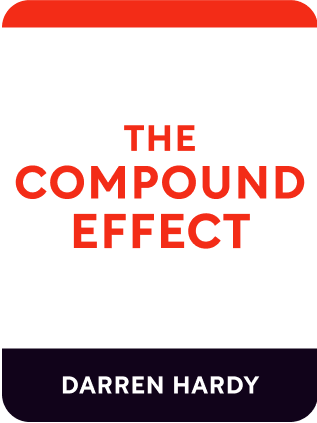

This article is an excerpt from the Shortform book guide to "The Compound Effect" by Darren Hardy. Shortform has the world's best summaries and analyses of books you should be reading.
Like this article? Sign up for a free trial here .
What does behavioral psychology say about habit formation? How can you unlearn old, self-sabotaging habits and craft new, positive habits that align with your goals?
According to Darren Hardy, the author of The Compound Effect, habit formation is a slow and gradual process. The key to successful habit formation is introducing small behavior changes and compounding their effects over time.
Read about the psychology of habit formation.
The Psychology of Habit Formation
Your behavior is all that stands between you and your goal. You need to figure out what you need to stop doing so the Compound Effect doesn’t drag you down, and you need to figure out what you must start doing, so the Compound Effect can take you in the right direction.
Tracking Self-Defeating Habits
Hardy once mentored a successful businessman who wanted to boost his productivity. Hardy had him track his time for a week and found that the exec spent an inordinate amount of time absorbing news—reading the newspaper, listening to news on his commute, checking websites throughout the day, and watching the news on TV at home. He spent almost four hours a day with news—much more than he needed.
Hardy had the man cancel his newspaper and keep his TV and radio off, and set up an RSS feed so he could see only the most pertinent news. With his newfound time, he found himself exercising, listening to inspirational material, and spending more time with his family. Without the constant barrage of negative news, his mood and stress level were much better. A small habit change yielded great results in productivity and an overall better life.
To become aware of your bad habits, list your top three goals and write down the habits that are keeping you from achieving them. For example, if you want to get healthy but eat a bag of chips every night, that would be a habit you need to change.
The next step is to list positive habits you will need to help you reach your goal. By replacing your self-defeating habits with positive habits, you’re on your way to reaching your goals.
5 Strategies to Get Rid of Bad Habits
Since your habits are learned, they can be unlearned. These five strategies will help you overcome your urge for instant gratification and eliminate bad habits:
- Know your triggers. What situations trigger bad habits? Do you drink too much with a certain group of friends? Do you crave chocolate at a certain time of day? It’s also important to look at emotional triggers. Do you eat too much when you’re stressed or bored? Do certain situations prompt your bad habits?
- Get rid of it. The next step is to throw out—literally—the objects enabling your bad habits. If you want to quit drinking, get rid of not only the alcohol, but all the items related to it, like special glasses and accessories. If you want to eat better, throw out all the junk food and stop buying it entirely.
- Find replacements. Think about something healthy and positive that can replace the bad habit. For example, Hardy loves to eat something sweet after a meal, but rather than a banana split, he has two Hershey’s Kisses. If you enjoy eating crunchy snacks while watching TV, try munching on celery and carrot sticks instead.
- Take it easy. You don’t have to go cold turkey. Since they are so entrenched, you may need to take small steps toward unwinding your bad habits. For example, when Hardy and his wife cut out caffeine, they started out with half-decaf coffee, then moved to full decaf, followed by decaf Earl Gray tea, and finally to decaf green tea.
- Or don’t take it easy. While it’s probably the exception and not the rule, some people actually do better changing a lot of bad habits at once. Think about getting into a cold lake or pool. Sometimes it’s easier to jump right in rather than wait and dread the cold.
You don’t have to cut out every bit of enjoyment in life; some “bad” things are perfectly fine in moderation. What’s important is making sure you are in charge of your vice and it doesn’t have you in its grips. For example, every three months, Hardy picks one of his vices—ice cream, wine, movies—and abstains for 30 days, proving to himself that he’s still in charge.
Six Strategies to Instill Good Habits
After eliminating bad habits, it’s time to construct new, positive behaviors. Here’s how:
- Help yourself succeed. Make your new habit easier to instill by setting yourself up for success. If you want to eat healthier, keep healthy snacks available so you don’t reach for a bag of chips. If you want to go to the gym regularly, make sure it’s not far away.
- Focus on what you can have or do. Instead of feeling deprived, focus on the new things you are bringing into your life. For example, instead of focusing on how you can’t have fast food, think about the delicious fish and vegetables you are going to have. Don’t focus on what you have to sacrifice—focus on what you’re getting.
- Accountability is key. Becoming accountable is a sure way to cement a new habit. Hardy once helped a co-worker quit smoking by announcing it to the entire company and installing a calendar outside her desk. At the end of every day she didn’t smoke, she got to mark the calendar with a red X.
- Find a partner. Hardy calls this a “success buddy.” A partner in your endeavor, whether it’s losing weight, exercising, or improving your career, boosts your accountability and lends support.
- Friendly competition. Competition can help you immerse yourself in a new habit. For example, Hardy’s company held a step competition, where employees would track their steps with pedometers. Even people who didn’t exercise got out there, walking miles a day. The competitive nature of the exercise was motivation.
- Enjoy. Instilling new habits doesn’t have to be drudgery. Finding rewards along the way can keep you motivated and help you celebrate your success in implementing new behaviors. Celebrate with anything from a relaxing bath to a nice dinner.
Habit Formation Is Hard, so Be Patient
Many people remain unhappy and unhealthy, unable to change their bad habits for years. The reason? Habit formation is not easy; it’s a slow and painful process. Remember that successful people don’t like doing the hard stuff either, but they do it anyway.
Be patient with yourself as you embark on the process of habit formation. Some of your ingrained behaviors have been with you for decades, and it will take time and effort before you see lasting results. If you mess up, try again. Pressing forward brings huge payoffs.

———End of Preview———
Like what you just read? Read the rest of the world's best book summary and analysis of Darren Hardy's "The Compound Effect" at Shortform .
Here's what you'll find in our full The Compound Effect summary :
- How small, daily actions can add up to big successes (or failures)
- Why it's easier to rely on the compound effect over time instead of taking big action all at once
- How it's possible to be better off starting with a penny than $3 million






